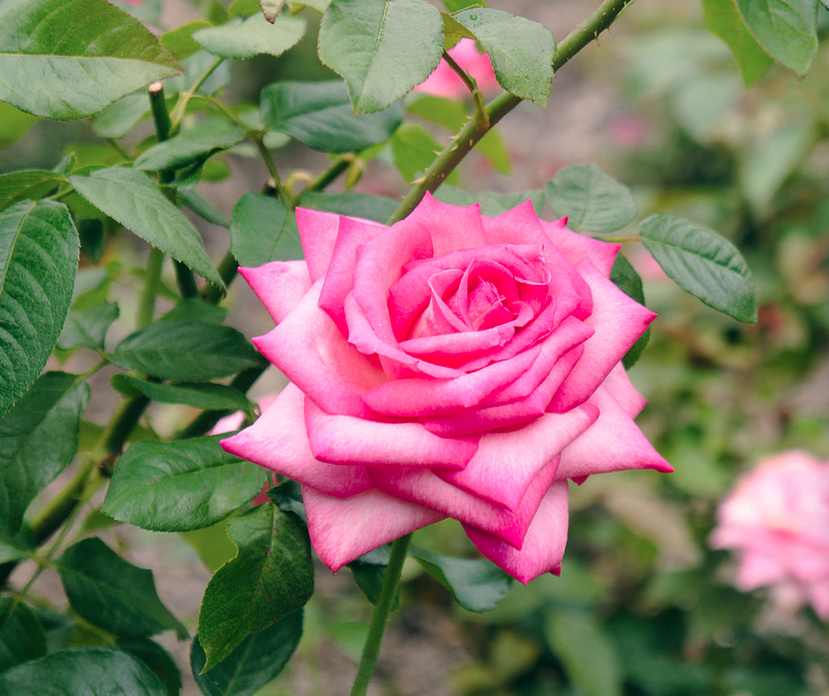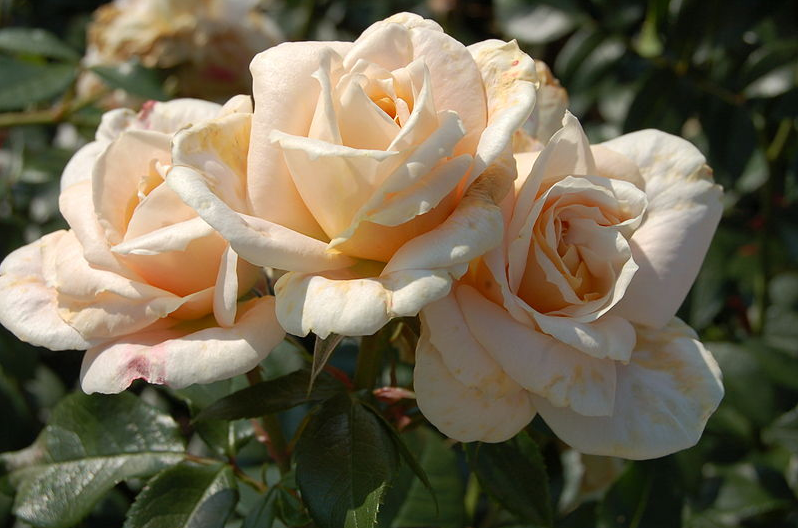Book Review: Roses Without Chemicals by Peter E. Kukielski
I really have a soft spot for roses and am always trying to fit in ways to grow them. I had my share of successes and failures whenever I’ve planted them. So, I was interested in checking out what information this book would have, being especially intrigued by the promise of SECTION CONTAINING “150 DISEASE-FREE VARIETIES”!
The author is the former curator of the Peggy Rockefeller Rose garden, part of the New York Botanical Garden. Under his impetus, the varieties of roses increased to more than 4000. He was especially proud of his efforts to showcase a modern collection of easy to grow disease resistant roses from “Texas Pioneer, Griffith Buck, Easy Elegance and Earth-Kind” and roses from hybridizers “Kordes, Meilland, Radler” and ADR Rose trial winners” out of Germany.
He explains that in about 2000 (thus the term for sustainable roses is also Millennial Roses) there has been a strong push toward plantsmen becoming more sensitive to the environmental consequences of garden plants that need high inputs of fertilizer, pesticides and fungicides—all of which have contributed to degradation of the planet and other life forms. Tied to this effort in rose growing has been a dissatisfaction with roses as garden plants that take too much effort to maintain as nice looking plants to have. He attributes this in part to hybridizers breeding to the “look” in a glossy sales catalog, going strongly after one particular attribute. The result is often the weakening or disappearance of other traits—like scent or disease resistance. They get bred out chasing after short term gains in the market share.
Thus, there has been a real effort to recapture those characteristics that gardeners and landscapers would best want to have in roses: resistance to common disease, fragrance, extended floral display and ease of care: Sustainable Roses. To this end, 12 test sites in various climate areas of the country were set up under rigorous scientific conditions that would have rating results obtained submitted to peer reviewed literature/scientific journals. This was funded by the rose society and the landscape industry not by breeders with vested interests. The roses had to prove their worth under all sorts of variables over a 4 year period. These are the Earth Kind roses. The roses he recommends in this book have all been grown by him and passed the tests described.
In the book he takes the reader through short descriptions of species roses and the hybrid classes.
He discusses growth habits, the basic needs of roses and how to plant them, companion planting for color texture and to attract beneficial insects. growing vertically, in containers and roses for small spaces. He also recommends which roses are truly good doers in various regions of the US and why.
Part of the Earthkind Sustainable Rose success is a program of best practices to follow which he says “eliminate the need to fertilizer applications, a 89% reduction in needing fungicides, insecticides or miticides.” A great deal of this has to do with building soil health through use of compost, constantly keeping three inches of mulch topped off and particular watering practices. He also says that with these Earth Kind roses, when it comes to pruning, less is more. They don’t need it and can also be planted more closely. The roses passing the test cannot get blackspot more than once yearly and it will not be detrimental to the roses overall health or foliage. So, that sounds good in an environment like ours in the Mid-Atlantic. The only area I would nitpick about is the lack of discussion about RRD (Rose Rosette Disease) which is becoming a huge factor, especially in close placement of roses.)
His rose list gives 4 graded ratings for disease resistance of “good” to superior (plant fully foliated and shows no signs of disease). Fragrance of 0 (no scent), faint, mild, strong and very strong.
Bloom: 3 ratings from good number, significant to profuse. It then gives each a sum of these ratings.
I prefer a rose to have strong or very strong fragrance and excellent to superior disease resistance. The number of blooms isn’t quite as important. Of course, with OGRs, I am used to a great flush of blooms and then the season is over, so that is probably why. So, on his list these looked really good:
Hybrid Teas to try:
Beverly
Dark Desire
Fiji
Francis Meiland
Golden Fairy Tale
Marie Louse Marjan
Souvenir Baden Baden
Wedding Bells
Promising Floribundas ( have clusters of blooms that look like hybrid tea blooms)
Easy Does IT
First Crush
Julia Child
Kosmos
Lion’s Rose
Michel Bras
Poseidon
Summer Romance
I can recommend this book to help you make some choices in your sustainable, environmentally friendly garden.




